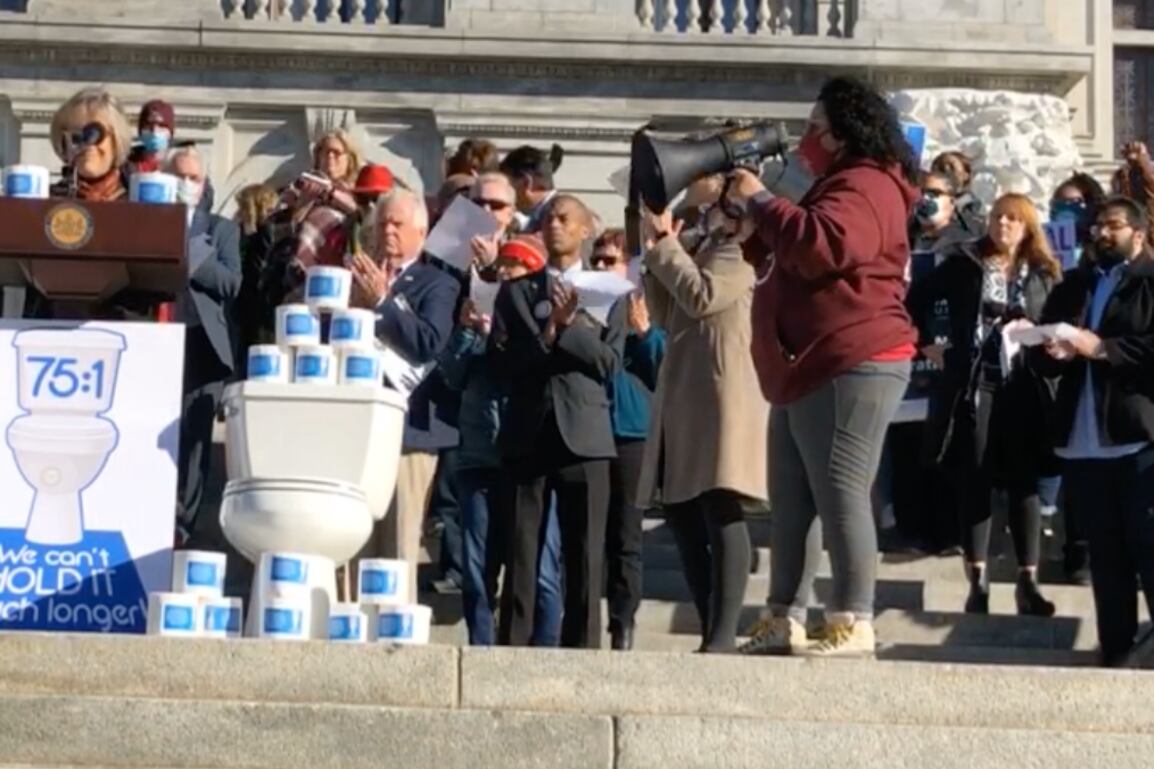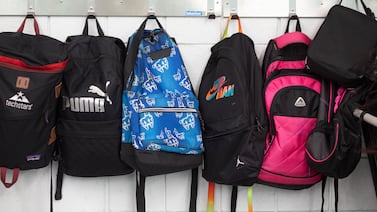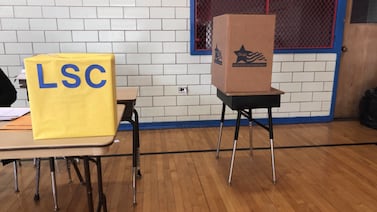Testimony in Pennsylvania’s landmark school funding trial turned to the effect of high-quality preschool as advocates descended on Harrisburg to press their case that the Commonwealth’s current system for allocating and distributing state education aid to districts perpetuates inequity and harms its neediest students.
“We are here to say we’ve heard enough. It is time to fund our schools,” said Donna Cooper, executive director of the Philadelphia-based Children First, formerly Public Citizens for Children and Youth. The rally drew more than 100 people to the Capitol steps Tuesday. The trial, which started more than a month ago, has been punctuated by several demonstrations, as organizations like Education Voters PA and Children First draw attention to the huge stakes they attach to the outcome.
“This court case is our Brown v. Board,” said Cooper, referring to the historic 1954 case in which the U.S. Supreme Court ruled that laws mandating racial segregation in public schools were unconstitutional. “It’s about whether every child in this state gets an equal and equitable education.”
Most states fund schools primarily through local property taxes, which gives an advantage to richer districts. State dollars, and some federal aid through programs like Title I, which provides funding for low-income students, are meant to compensate for inequities. But these dollars rarely make up all the difference.
In Pennsylvania, the per-pupil gaps in spending among the richest and poorest districts, some of which abut each other, are among the widest in the country. And a study commissioned by the legislature showed that the state needs to invest $4.6 billion more to assure that each district has enough money to provide an adequate education to all its students, based on their needs.
This case is the latest of several seeking funding reform in Pennsylvania filed over the last 30 years and the first to go to trial. Six school districts, three families and two civil rights groups sued the state in 2014, arguing that the state’s school funding — both the amount it allocates and the way it is distributed — violates the state’s constitutional mandate to maintain a “thorough and efficient system” of education, as well as violating students’ equal protection rights.
The trial, before Commonwealth Court Judge Renée Jubelirer, is expected to last 8 to ten weeks.
In 2017, the state Supreme Court reversed prior rulings that school funding was a matter for legislative policymaking, not judicial review, and allowed it to go to trial.
Plaintiffs have so far called witnesses from three of the suing districts, Panther Valley, Shenandoah Valley, and Greater Johnstown. They all said that their students need more academic support than they can afford to provide and described poor building conditions, such as moldy walls and ceilings.
Panther Valley Superintendent David McAndrew said his elementary school has only one toilet for 75 students; a few days later, Johnstown first grade teacher Stephanie Kobal said that in one wing of her school, there is one toilet per 125 students.
Demonstrators, whom organizers said came from 24 school districts in 13 counties, brought a toilet to the protest to dramatize that testimony.
As the demonstrators gathered on the Capitol steps, lawyers representing Republican legislative leaders cross-examined Steven Barnett, an economist who is the founder and co-director of the National Institute for Early Education Research, based at Rutgers University.
Barnett was called to the stand by the plaintiffs to underscore the importance of preschool to child development and school readiness. He presented testimony that “high-quality” preschool can produce lasting academic benefits for students, especially those who have grown up in poverty.
During the trial last week, Johnstown Superintendent Amy Arcurio had said that her district is unable to afford pre-K for all of its students, although 70% of them enter kindergarten without some basic skills. By first grade, 80% need intensive intervention, she said, which the district also cannot afford.
In their cross examination of witnesses, attorneys for Republican legislative leaders have sought to highlight any extra programs the districts have or any fund balance they might show at the end of their budget year as evidence that they don’t need additional money.
They also argued that the “thorough and efficient” standard in the Constitution is minimal; for instance, they tried to limit testimony about preschool as “irrelevant” to the case.
In his testimony, Barnett highlighted student gains in 24 of the poorest New Jersey school districts in which its state Supreme Court, as part of a similar lawsuit, ordered the establishment of preschool. One of the benefits includes helping students with social and emotional skills, such as resilience, as well as academics, Barnett said.
Barnett said during his testimony that in some of these studies, it was shown that the gains afforded by preschool are sometimes not sustained over time if students’ subsequent educational experience is subpar. Attorneys for the legislative leaders jumped on that to question the value of having preschool at all.
“Preschool programs are effective; they’re not magic,” Barnett said.
Prior expert witnesses called by the plaintiffs sought to establish that Pennsylvania both doesn’t provide enough revenue to make up for disparities among districts, and that it unfairly distributes the money it does provide.
Former top Pennsylvania Department of Education official Matt Stem said there are many interventions that the department believes can improve student learning, such as extra counselors, more Advanced Placement courses, extracurricular activities, and behavioral support, but they cost money that many districts don’t have.
He tied the gap in achievement between students of different demographic groups to lack of sufficient funding. For instance, 37% of Black students score proficient on state tests in English compared to 71% of white students, Stem said.
“The department believes that one of the primary reasons we see these gaps is that the resources aren’t there,” he said. “I think it’s very, very unlikely that Pennsylvania will be able to close the achievement gaps that we’ve seen for decades without additional funding, particularly for schools with high percentages of students in poverty.”








